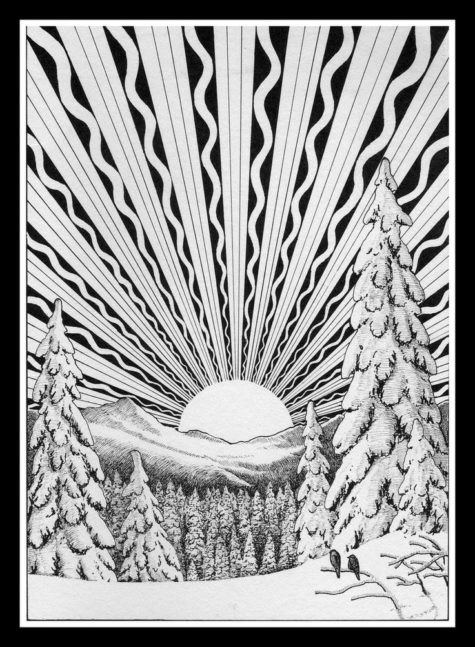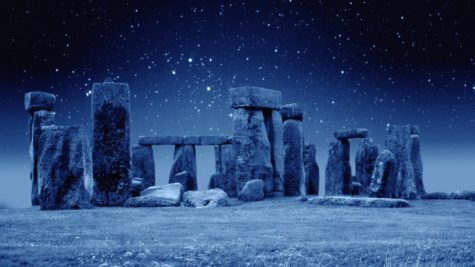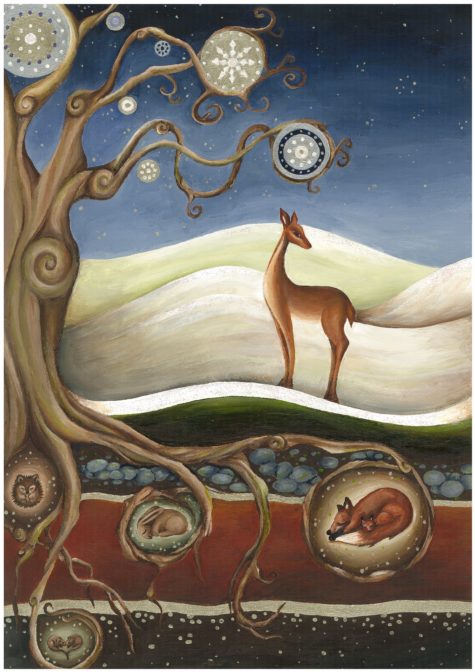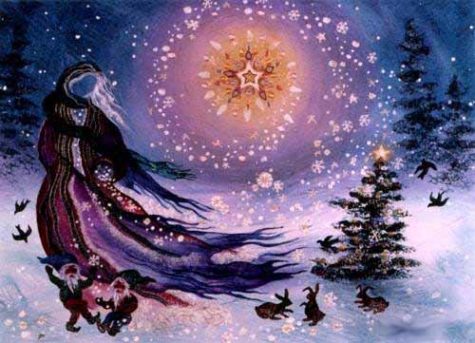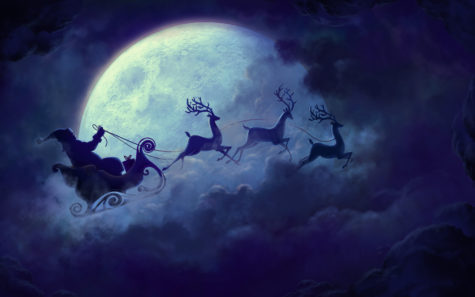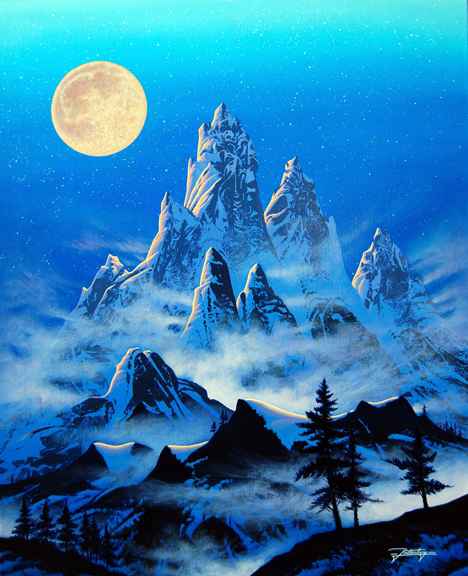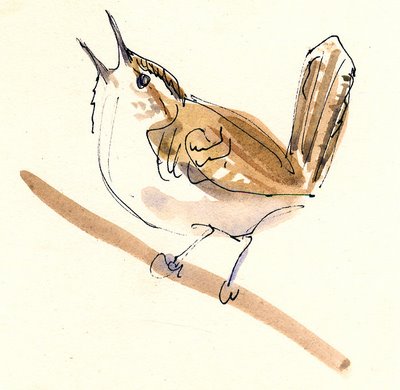December Lore
According to astrological and lunar lore, there are best days for doing a variety of tasks. The best days listed here are based on both the phase of the moon and its position in the zodiac. Many people believe that if you do the tasks on the dates listed, you will get the best results possible.
December 1:
- Castrate Farm Animals
- Cut Firewood
- Dig Holes
- Kill Plant Pests
- Mow Grass (to increase growth)
- Paint
- Potty Train a Child
- Wean a Baby or an Animal
December 2:
- Castrate Farm Animals
- Cut Firewood
- Dig Holes
- Kill Plant Pests
- Mow Grass (to increase growth)
- Paint
- Potty Train a Child
- Wean a Baby or an Animal
December 3:
- Castrate Farm Animals
- Cut Firewood
- Cut Hair (to increase growth)
- Dig Holes
- Get Married
- Mow Grass (to increase growth)
- Plant Above Ground Crops
- Potty Train a Child
- Start Diet (to gain weight)
- Wax Floors
- Wean a Baby or an Animal
December 4:
- Castrate Farm Animals
- Cut Firewood
- Cut Hair (to increase growth)
- Dig Holes
- Get Married
- Mow Grass (to increase growth)
- Plant Above Ground Crops
- Potty Train a Child
- Start Diet (to gain weight)
- Wax Floors
- Wean a Baby or an Animal
December 5:
- Bake
- Cut Firewood
- Dig Holes
- Kill Plant Pests
- Mow Grass (to increase growth)
December 6:
- Bake
- Cut Firewood
- Dig Holes
- Kill Plant Pests
- Mow Grass (to increase growth)
December 7:
- Bake
- Cut Firewood
- Dig Holes
- Kill Plant Pests
- Mow Grass (to increase growth)
December 8:
- Advertise Something for Sale
- Cut Firewood
- Cut Hair (to increase growth)
- Dig Holes
- Get Married
- Mow Grass (to increase growth)
- Paint
- Plant Above Ground Crops
- Wax Floors
December 9:
- Advertise Something for Sale
- Cut Firewood
- Cut Hair (to increase growth)
- Dig Holes
- Get Married
- Mow Grass (to increase growth)
- Paint
- Plant Above Ground Crops
- Wax Floors
December 10:
- Cut Firewood
- Dig Holes
- Kill Plant Pests
- Mow Grass (to increase growth)
- Set Eggs
- Travel (for pleasure)
December 11:
- Cut Firewood
- Dig Holes
- Kill Plant Pests
- Mow Grass (to increase growth)
- Set Eggs
- Travel (for pleasure)
December 12:
- Brew
- Can Fruits and Vegetables
- Hunting
- Mow Grass (to slow growth)
- Plant Flowers
- Plant Root Crops
- Plant Seed Beds
- Slaughter
- Transplant (seedlings and plants)
December 13:
- Brew
- Can Fruits and Vegetables
- Hunting
- Mow Grass (to slow growth)
- Plant Flowers
- Plant Seed Beds
- Slaughter
- Transplant (seedlings and plants)
December 14:
- Ask For a Loan
- Cut Hair (to slow growth)
- Demolition
- Dig Post Holes
- Dry Fruits and Vegetables
- Kill Plant Pests
- Mow Grass (to slow growth)
- Paint
- Pick Apples and Pears
- Quit Smoking
- Start Diet (to lose weight)
- Wash Wooden Floors
December 15:
- Ask For a Loan
- Cut Hair (to slow growth)
- Demolition
- Dig Post Holes
- Dry Fruits and Vegetables
- Kill Plant Pests
- Mow Grass (to slow growth)
- Paint
- Pick Apples and Pears
- Plant Root Crops
- Quit Smoking
- Start Diet (to lose weight)
- Wash Wooden Floors
December 16:
- Ask For a Loan
- Cut Hair (to slow growth)
- Demolition
- Dig Post Holes
- Dry Fruits and Vegetables
- Kill Plant Pests
- Mow Grass (to slow growth)
- Paint
- Pick Apples and Pears
- Plant Root Crops
- Quit Smoking
- Start Diet (to lose weight)
- Wash Wooden Floors
December 17:
- Kill Plant Pests
- Mow Grass (to slow growth)
- Quit Smoking
- Start Diet (to lose weight)
December 18:
- Harvest
- Kill Plant Pests
- Mow Grass (to slow growth)
- Quit Smoking
- Start Diet (to lose weight)
December 19:
- Cut Hair (to slow growth)
- Get Married
- Mow Grass (to slow growth)
- Plant Flowers
December 20:
- Cut Hair (to slow growth)
- Get Married
- Mow Grass (to slow growth)
December 21:
- Can Fruits and Vegetables
- Make Jams and Jellies
- Mow Grass (to slow growth)
- Plant Root Crops
- Plant Seed Beds
- Prune Trees
- Transplant (seedlings and plants)
December 22:
- Can Fruits and Vegetables
- Make Jams and Jellies
- Mow Grass (to slow growth)
- Plant Flowers
- Plant Root Crops
- Plant Seed Beds
- Prune Trees
- Transplant (seedlings and plants)
December 23:
- Advertise Something for Sale
- Castrate Farm Animals
- Cut Hair (to slow growth)
- Demolition
- Harvest
- Kill Plant Pests
- Mow Grass (to slow growth)
- Pick Apples and Pears
- Plant Root Crops
- Potty Train a Child
- Quit Smoking
- Start Diet (to lose weight)
- Wash Windows
- Wash Wooden Floors
- Wean a Baby or an Animal
December 24:
- Advertise Something for Sale
- Castrate Farm Animals
- Cut Hair (to slow growth)
- Demolition
- Harvest
- Kill Plant Pests
- Mow Grass (to slow growth)
- Pick Apples and Pears
- Plant Root Crops
- Potty Train a Child
- Quit Smoking
- Start Diet (to lose weight)
- Wash Windows
- Wash Wooden Floors
- Wean a Baby or an Animal
December 25:
- Castrate Farm Animals
- Mow Grass (to slow growth)
- Plant Root Crops
- Potty Train a Child
- Prune Trees
- Wean a Baby or an Animal
December 26:
- Bake
- Castrate Farm Animals
- Cut Firewood
- Cut Hair (to increase growth)
- Dig Holes
- Mow Grass (to increase growth)
- Plant Above Ground Crops
- Potty Train a Child
- Wax Floors
- Wean a Baby or an Animal
December 27:
- Bake
- Castrate Farm Animals
- Cut Firewood
- Cut Hair (to increase growth)
- Dig Holes
- Mow Grass (to increase growth)
- Plant Above Ground Crops
- Potty Train a Child
- Wax Floors
- Wean a Baby or an Animal
December 28:
- Castrate Farm Animals
- Cut Firewood
- Dig Holes
- Kill Plant Pests
- Mow Grass (to increase growth)
- Paint
- Potty Train a Child
- Wean a Baby or an Animal
December 29:
- Castrate Farm Animals
- Cut Firewood
- Dig Holes
- Kill Plant Pests
- Mow Grass (to increase growth)
- Paint
- Potty Train a Child
- Wean a Baby or an Animal
December 30:
- Castrate Farm Animals
- Cut Firewood
- Cut Hair (to increase growth)
- Dig Holes
- Get Married
- Mow Grass (to increase growth)
- Plant Above Ground Crops
- Potty Train a Child
- Start Diet (to gain weight)
- Wax Floors
- Wean a Baby or an Animal
December 31:
- Castrate Farm Animals
- Cut Firewood
- Cut Hair (to increase growth)
- Dig Holes
- Get Married
- Mow Grass (to increase growth)
- Plant Above Ground Crops
- Potty Train a Child
- Start Diet (to gain weight)
- Wax Floors
- Wean a Baby or an Animal
Source: The Farmer’s Almanac
The winter solstice (or hibernal solstice), also known as midwinter, is an astronomical phenomenon marking the day with the shortest period of daylight and the longest night of the year. In the Northern Hemisphere this is the December solstice and in the Southern Hemisphere this is the June solstice.
The Winter Solstice has been celebrated for millennia by cultures and religions all over the world. Many modern pagan religions are descended in spirit from the ancient pre-Christian religions of Europe and the British Isles, and honor the divine as manifest in nature, the turning of the seasons, and the powerfully cyclical nature of life.
Worldwide, interpretation of the event has varied across cultures, but many have held a recognition of rebirth, involving holidays, festivals, gatherings, rituals or other celebrations around that time.
Most pagan religions are polytheistic, honoring both male and female deities, which are seen by some as two aspects of one non-gendered god, by others as two separate by complementing beings, and by others as entire pantheons of gods and goddesses.
It is common for the male god(s) to be represented in the sun, the stars, in summer grain, and in the wild animals and places of the earth. The stag is a powerful representation of the male god, who is often called “the horned god.”
The Goddess is most often represented in the earth as a planet, the moon, the oceans, and in the domestic animals and the cultivated areas of the earth.
In many pagan traditions the Winter Solstice symbolizes the rebirth of the sun god from his mother, the earth goddess. The Winter Solstice is only one of eight seasonal holidays celebrated by modern pagans.
Historical Notes
The solstice may have been a special moment of the annual cycle for some cultures even during neolithic times. Astronomical events were often used to guide activities such as the mating of animals, the sowing of crops and the monitoring of winter reserves of food.
Many cultural mythologies and traditions are derived from this. This is attested by physical remains in the layouts of late Neolithic and Bronze Age archaeological sites, such as Stonehenge in England and Newgrange in Ireland.
The primary axes of both of these monuments seem to have been carefully aligned on a sight-line pointing to the winter solstice sunrise (Newgrange) and the winter solstice sunset (Stonehenge). It is significant that at Stonehenge the Great Trilithon was oriented outwards from the middle of the monument, i.e. its smooth flat face was turned towards the midwinter Sun.
The winter solstice was immensely important because the people were economically dependent on monitoring the progress of the seasons. Starvation was common during the first months of the winter, January to April (northern hemisphere) or July to October (southern hemisphere), also known as “the famine months”.
In temperate climates, the midwinter festival was the last feast celebration, before deep winter began. Most cattle were slaughtered so they would not have to be fed during the winter, so it was almost the only time of year when a plentiful supply of fresh meat was available. The majority of wine and beer made during the year was finally fermented and ready for drinking at this time.
The concentration of the observances were not always on the day commencing at midnight or at dawn, but at the beginning of the pagan day, which in many cultures fell on the previous eve. Because the event was seen as the reversal of the Sun’s ebbing presence in the sky, concepts of the birth or rebirth of sun gods have been common and, in cultures which used cyclic calendars based on the winter solstice, the “year as reborn” was celebrated with reference to life-death-rebirth deities or “new beginnings” such as Hogmanay’s redding, a New Year cleaning tradition. Also “reversal” is yet another frequent theme, as in Saturnalia’s slave and master reversals.
A Winter Solstice reading:
This is the night of the Solstice, the longest night of the year. Now darkness triumphs, yet gives way and changes into light. The breath of Nature is suspended: all waits while within the Cauldron, the Dark King is transformed into the infant light. We watch for the coming of Dawn, when the great Mother again gives birth to the Divine child Sun, who is bringer of hope and the promise of summer. This is the stillness behind motion, when time itself stops; the center, which is also the circumference of all. We are awake in the Night. We turn the Wheel to bring the Light. We call the sun from the womb of night.
Celebrating the Winter Solstice
At the Winter Solstice we celebrate by bringing warmth, light and cheerfulness into this dark time of the year. Holidays such as this have their origins as “holy days”. They are the way human beings mark the sacred times in the yearly cycle of life.
On this shortest day of the year, the sun is at its lowest and weakest, a pivot point from which the light will grow stronger and brighter. This is the pivot point of the year. The Romans called it Dies Natalis Invicti Solis, the Birthday of the Unconquered Sun.
A simple way to celebrate this day is with a small candle lighting ceremony. The purpose being to celebrate this time of renewal in our lives, to give thanksgiving for the past and the present and to offer a blessing for the year to come.
- How to:
Create a small sacred space. Decorate it in a way that feels cheerful, warm, and bright. In the center place a white candle. As the sun sets on this day, light the candle, and say a few words about bringing the light forth in your life, in the lives of your family and loved ones in the coming year. Either allow the candle to burn out of it’s own accord, or relight it every evening until Jan 1st.
From Wikipedia and other sources
In certain areas of England there was an expression that if a dark moon came on Christmas, a fine harvest year would follow. Other areas declared that a waxing or new moon on Christmas portended a good year, but a waning moon a hard year.
From: Moon Magick
What follows is a list (in alphabetical order) of the names given to the December moon. Also listed is the tradition and/or origin of that moon name:
- Aerra Geola ~other
- Ashes Fire Moon ~San Juan
- Before Yule Moon ~Cherokee
- Big Bear’s Moon ~Winnebago
- Big Winter Moon ~Creek
- Bitter Moon ~Chinese
- Cold Moon ~Algonquin, Celtic
- Cold Time Moon ~Mohawk
- Deer Horn Shedding Moon ~Sioux
- Frost Fish Moon ~Passamaquoddy
- Heavy Snow Moon ~other
- Kaitvitjuitk ~Inuit
- Little Finger Moon ~other
- Long Nights Moon ~Algonquin
- Mid-Winter Moon ~other
- Night Moon ~Taos
- Oak Moon ~Janic (full), Medieval English
- Peach Moon ~Choctaw
- Popping Trees Moon ~Sioux, Arapaho
- Real Goose Moon ~Kiowa
- Respect Moon ~Hopi
- Running Wolves Moon ~Cheyenne
- Small Spirits Moon ~other
- Snow Moon ~Cherokee, Janic (dark)
- Turning Moon ~other
- Twelfth Moon ~Dakotah
- Under Burn Moon ~other
- Winter Maker Moon ~other
- Wintermonat Moon ~other
- Wolf Moon ~other
- Yellow Leaves Moon ~other
The wren, the wren, The king of all birds,
On St. Stephen’s Day Is caught in the furze.
One of the most remarkable and dramatic Solstice customs involving animals is the Hunting of the Wren, which traditionally takes place on Boxing Day or St. Stephen’s Day. The custom lasted longest in Wales and the Isle of Man and still takes place today in Ireland. A description from 1840 describes it thus:
For some weeks preceding Christmas, crowds of village boys may be seen peering into hedges, in search of the tiny wren; and when one is discovered the whole assemble and give wager chase until they have slain the little bird. In the hunt the utmost excitement prevail; shouting, screeching, and rushing, all sorts of missiles are flung at the puny mark… From bush to bush, from hedge to hedge, is the wren pursued until bagged with as much pride and pleasure as the cock of the woods by the more ambitious sportsman… On the anniversary of St. Stephen the enigma is explained. Attached to a huge holly bush, elevated on a pole, the bodies of several little wrens are borne about… through the streets in procession… And every now and then stopping before some popular house and there singing the Wren song.
Various versions of this song have survived. Here is a typical one:
The wren, the wren, the king of all birds,
On St. Stephen’s Day was caught in the furze;
Though his body is small, his family is great,
So if it please your honor, give us a treat.
On Christmas day I turned a spit;
I burned my finger, I feel it yet.
Up with the kettle, down with the pan.
Give us some money to bury the wren.
The antiquity of this rather barbaric custom is clear enough. At one time the Wren, the “king of all birds,” must have represented the dying year king and was sacrificed on his behalf for the good of the land. The following story from Scotland suggest the reason for this rather plain little bird being addressed as King.
The Parliament of Birds:
At a gathering of birds, it was decided to elect a king by seeing which could fly the highest, and nearest to the sun. The eagle’s broad strong wings bore it higher than any other. It was about to acclaim its prowess, when it became aware of a “whirr-chuck” sound – the little wren had flown yet higher than the eagle, because it was cheekily perched on it’s back.
For many years during the 18th and 19th centuries, the Irish Wren Boys were accompanied by masked guisers, including the ubiquitous lair bhan or White Mare. Nowadays, due in part to a shortage of wrens and to a somewhat more bird-conscious awareness, they are seldom hunted. Although the Wren Boys still circulate in Ireland, they no longer kill a wren, but proceed from house to house with a decorated cage.
Here is a different wren song sung by the guisers in Pembrokeshire, England, where the custom is no longer practiced, but the sacredness of the bird is remembered:
Joy, health, love and peace be all here in this place.
By your leave we will sing concerning our king.
Our king is well dressed, in silks of the best,
In ribbons so rare, no king can compare.
We have traveled many miles, over hedges and stiles,
In search of our king, until you we bring.
Old Christmas is past, Twelfth Night is the last,
And we bid you adieu, great joy to the new.
It is not of the newborn king of Winter, the Wondrous Child they are speaking, but King Wren, who is remembered in a curious song from Oxfordshire, that manages to encapsulate the more ancient significance of the custom.
From: The Winter Solstice
Art by: Cathy Johnson
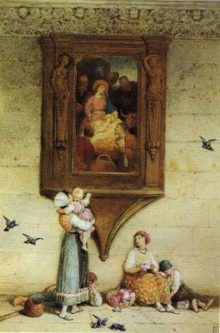 December 28 is Dyzymas Day, also known as Holy Innocent’s Day, or Childremass. This day has always, in one way or another been associated with children. In more recent times the connection is specifically with the children slaughtered at the orders of Herod, who feared the prophecy of the Magi that a new King of the Jews had been born in Judea.
December 28 is Dyzymas Day, also known as Holy Innocent’s Day, or Childremass. This day has always, in one way or another been associated with children. In more recent times the connection is specifically with the children slaughtered at the orders of Herod, who feared the prophecy of the Magi that a new King of the Jews had been born in Judea.
Throughout the Middle Ages this day was considered particularly unlucky and it was believed that no task begun on December 28th would prosper. Both the French King Louis XI and the English King Edward IV refused to do any business on this date, and the latter postponed his coronation when it was originally planned for this inauspicious date.
In Northamptonshire it was known as Dyzymas Day and a local saying was:
“What is begun on Dyzymas Day will never be finished.”
A more barbaric practice that continued well into the eighteenth century was to beat children on this day. This seems to have been a curious mixture of ideas – that if the children were made to suffer on this day they would be spared the rest of the year, and, moreover, that such beatings would drive out any evil spirits who might have taken up residence in the child.
These beatings rarely involved real cruelty. Indeed, the underlying theme of the day was a kind of equality. Thus wives and husbands exchanged token blows, and in parts of Germany and Sweden children were permitted to beat their parents.
Freshly gathered evergreen branches were used for this task, with birch and rosemary being particularly popular. A chant preserved from this time goes:
Fresh green! Long life!
Give me a coin!
While in other places servants beat their masters crying:
Fresh, green, fair, and fine,
Gingerbread and brandy-wine!
The whole idea seems to have been to show that by expressing individuality and exchanging gentle blows, true anger and aggression might thus be waived for the coming year – an enlightened notion from which we might well learn today.
From The Winter Solstice

